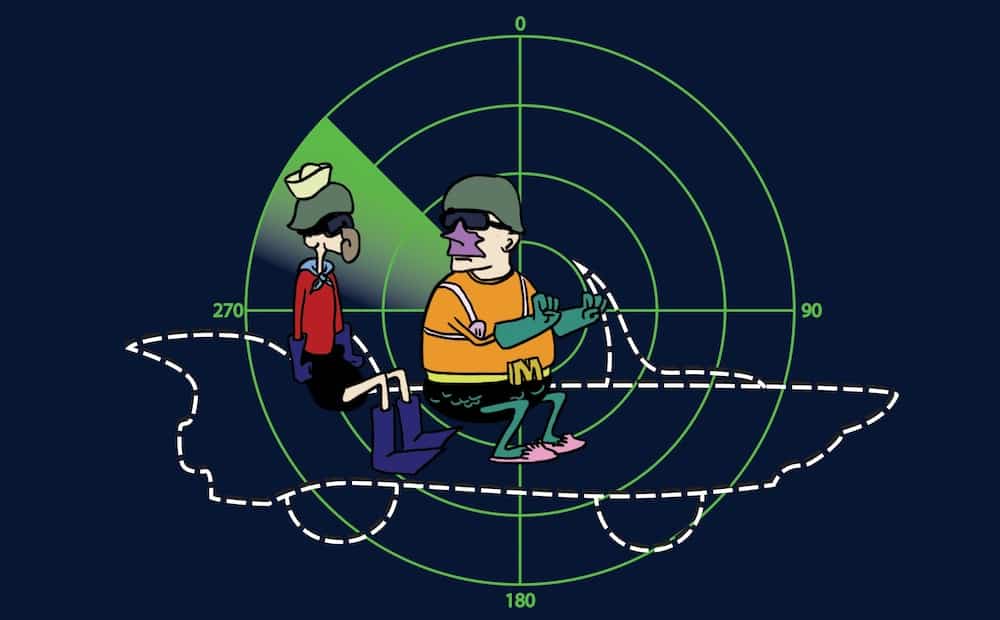Two members of U of T’s Edward S. Rogers Sr. Department of Electrical & Computer Engineering have invented a functioning invisibility cloak. Professor George Eleftheriades and PhD student Michael Selvanayagam used the principle of wave interference to conceptualize a thin “cloak” of atennae that renders an object invisible to radar. To accompany the research, published last week in the journal Physical Review X, Selvanayagam built a functioning model of the device for less than $2,000.
Radio devices read the appearance and position of objects by interpreting the waves that bounce off object — the same principle behind human sight, but in a different spectrum. The cloaking device built by Eleftheriades and Selvanayagam radiates a field that cancels out the waves bouncing off the object it covers, rendering the object invisible in the radio spectrum. The device can also alter the appearance or the apparent location of the object when viewed through radar.
The device was created in an effort to improve upon existing research, says Selvanayagam. “The idea of cloaking an object was first proposed in 2006 or so by a group at Duke University… they were the ones who first showed that cloaking is something that you can actually do using specially designed materials and structures.” A structure of metamaterials shields the object inside from rays by bending light around the object. The problem with these structures was their relative scalabilty and complexity: early structures were large and awkward, and techniques designed to shield smaller objects weren’t very modifiable. Eleftheriades and Selvanayagam’s research has solved these problems — their device is scalable and flexible, and can also be retuned to work with different wavelengths.
Though for a functioning invisibility device an under $2,000 cost seems impressively cheap, Selvanayagam didn’t view the budget as a limitation. “The reason it was a small budget was because we wanted to do everything as simply as possible,” he says. “So all the components are discrete parts, we didn’t try to integrate anything into a package, we did everything very modularly, very system level, very part-by-part, so we could switch things in and out for the ease of the experiment.” A larger budget would allow experimenters to fully integrate the device — or make it more reactive. Currently, the device must be manually tuned, but in the future, the device may contain a mechanism that would allow it to detect radio waves and then automatically tune itself to the approproiate frequency.
The most obvious applications for the new device are military — hiding or disguising objects from prying eyes. “But in general, there are some more basic, not-very-fancy, but more down to earth applications,” points out Selvanayagam. “If you think about the city of Toronto, there are antenna towers all over the city, that’s just how our wireless system works. And some of them are being blocked by various objects, there are buildings in the way.” The device could cloak buildings that interrupt cellular communications. “If you pinch around them with these antennas, the buildings disappear.”
Further applications — especially those that would require use of the technology in the visible spectrum, including medical imaging applications — are a matter of technology. “We did it with radio waves because the technology is mature enough that you can apply established technological ideas like atennas,” explains Selvanayagam. “At higher frequencies, as you approach the visible spectrum or the region beyond x-rays, the technology is very different, so there are some serious challenges in taking what we did and moving it up.”


